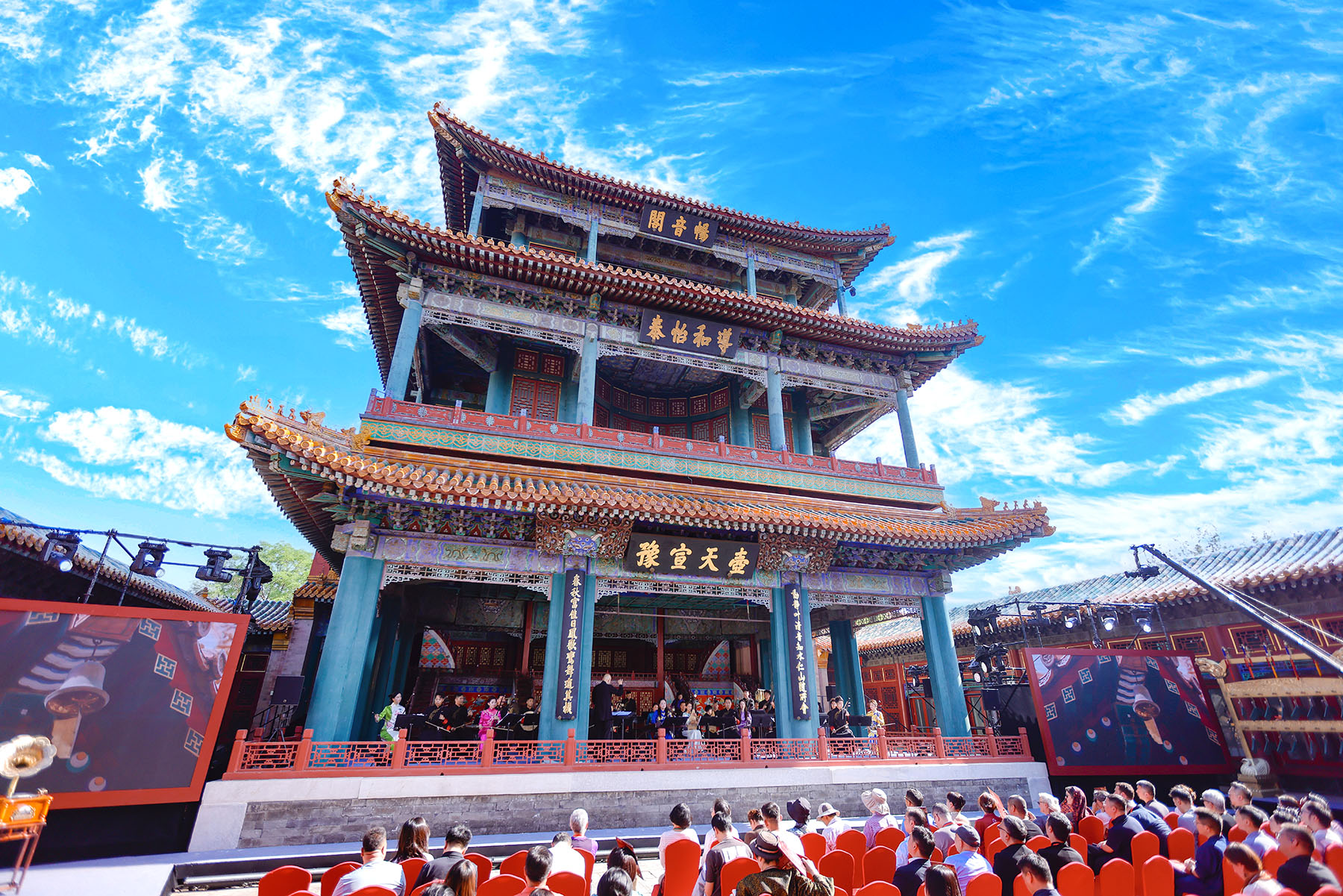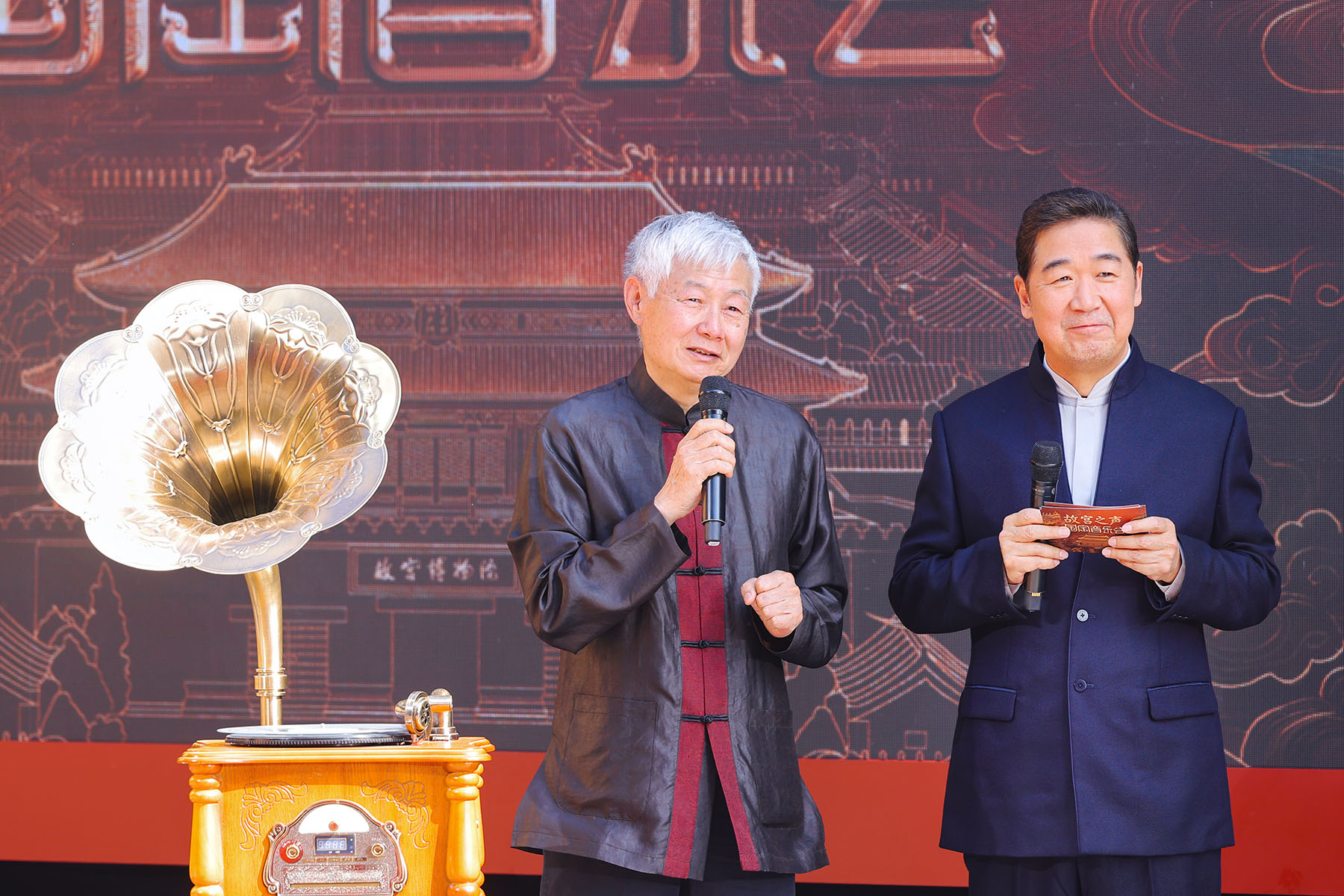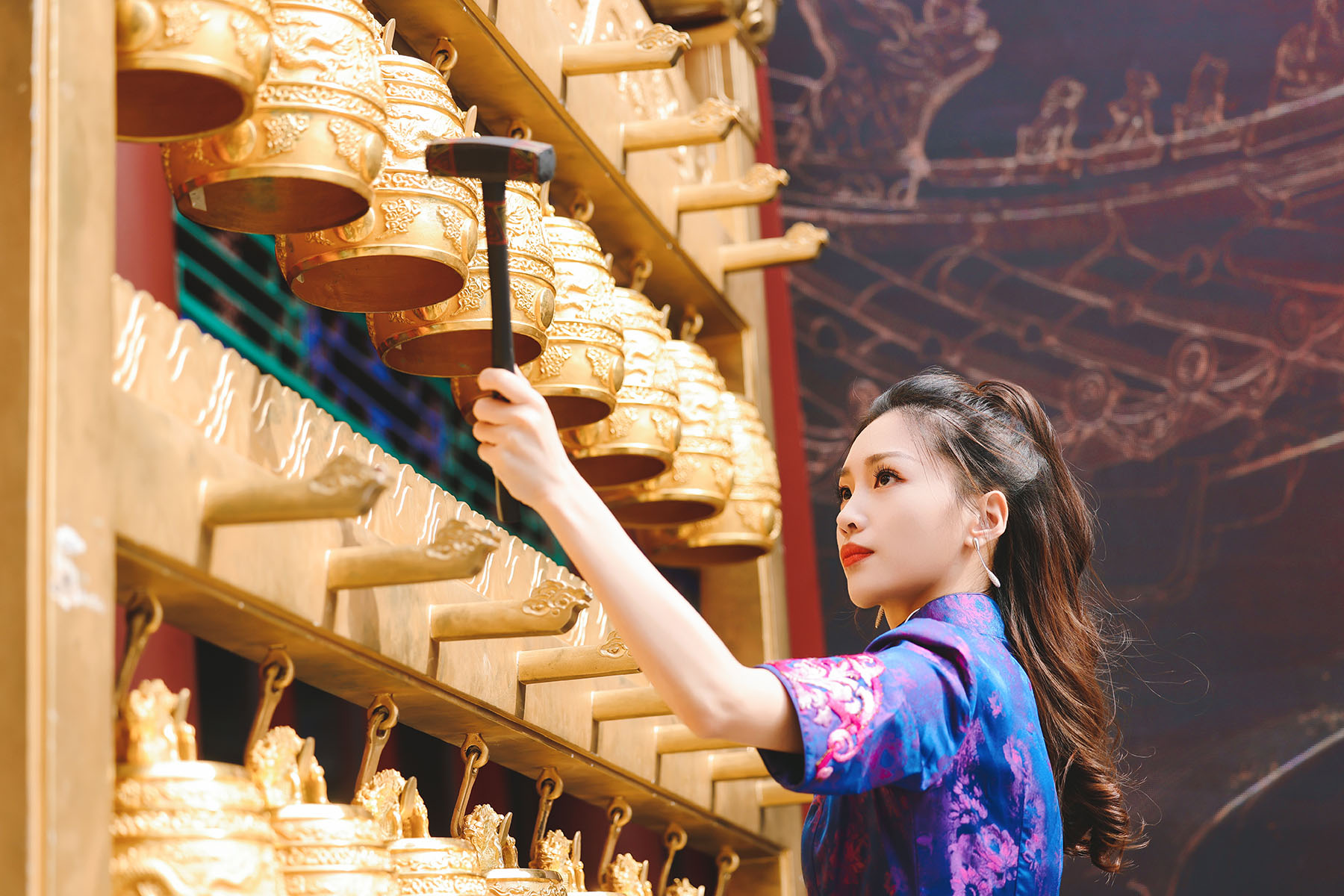An initiative records Chinese composers' works inspired by, and performed in, the Forbidden City, Chen Nan reports.

The project, The Sound of the Forbidden City, was announced five years ago by the Palace Museum in Beijing, also known as the Forbidden City, and the China National Traditional Orchestra.
This music initiative aims to celebrate the creativity and ingenuity of traditional Chinese culture, drawing inspiration from the architectural marvels and cultural treasures housed within the museum.
On May 19, a concert premiered at Changyin Ge, or the Pavilion of Cheerful Melodies, in the Forbidden City.
READ MORE: Music festival harmonizes past and present
The museum served as China's imperial palace from 1420 to 1911. Built in 1772 during the reign of Qing Dynasty (1644-1911) Emperor Qianlong, the three-story Changyin Ge was once a royal venue where emperors and their successors enjoyed the finest operas from around the country.
Ten original compositions by 10 Chinese composers were performed by the China National Traditional Orchestra under the baton of conductor Liu Sha to launch a nationwide tour. On May 25, the concert was staged in Shanghai.
Veteran actor Zhang Guoli served as the narrator, sharing the stories behind each piece.
The concert opened with Bai Gong Song (Ode to the Artisans), composed by Zhao Lin and inspired by the "eight traditional craftsmanship disciplines" used in the construction and restoration of imperial architecture during the Ming (1368-1644) and Qing dynasties. These include carpentry, roof tiling and bricklaying.
"The architecture of the museum leaves people in awe, but it was truly built by tens of thousands of craftsmen, whose wisdom is embedded in every grand structure," Zhao explains.
Using traditional Chinese instruments, Zhao brought to life the rhythmic chiseling, brushing, hammering and scraping that once echoed through the palace's courtyards.
"Above all," he says, "I hoped to pay tribute to the laborers behind this ancient wonder."
The second piece, Zhong Ming He (Chimes of Celebration), was composed by Tan Dun and inspired by Qing-era golden bell chimes (bianzhong), which are some of the oldest Chinese instruments. These sacred sounds once filled ceremonial halls, resonating with imperial grandeur.

Composer Ma Jiuyue was inspired by another dimension of the museum's soundscape — its ancient timepieces.
"When I first came to Beijing to study erhu (a two-stringed fiddle) at the China Conservatory of Music at age 13, I visited the Palace Museum in Beijing. The gallery of clocks left a deep impression on me," Ma recalls.
His piece, Sui Hua Zhu (The Echoes of Time), captures the tick of centuries, the chime of mechanical timekeepers and the solemnity of passing dynasties. Ma composed three pieces in total, with one featured in this concert.
Beijing-born composer Liu Sichao contributed to Mu Jin Hui (Bathing in the Golden Brilliance), inspired by the Jinshui River, which runs along the central axis of the museum. The music evokes a serene vision: golden light glinting off still waters, reflecting red walls and sloping eaves.
"The Jinshui River — what we locals call the Tongzi River — has been part of my life since childhood," he says. "This piece is deeply personal. It's the sound of my own memories flowing through the palace."

As more pieces unfolded, the audience was invited to shift from merely "seeing" the Forbidden City to "hearing" it, not just as a monument of imperial history but as a living, breathing cultural symphony. Through this integration of architecture and acoustics, the concert bestowed a new musical memory on the ancient palace.
Renowned sound engineer Li Dakang served as the chief recording director. He and his team ventured deep into the museum to capture its natural soundscape, from the creak of doors to the hush of snowfall.
"We assembled a team of over a dozen top-tier professionals. Our first mission was to collect every kind of sound from the museum and provide them to the composers," says Li, 77. "They could then choose what resonated with them."
The team collected nearly a thousand audio samples in all. These were not only used as creative inspiration but were also woven directly into the compositions as sonic textures.
However, the recording process was fraught with challenges.
"We couldn't disrupt the visitor experience, and we could never risk damaging any ancient structures," Li says. "We had to invent entirely new recording protocols."

Different sites posed different problems. Some were too noisy due to restoration work. Others were eerily silent. The team developed unique techniques to deal with each.
One moment stood out for Li — recording during a snowfall.
"We knew snow was forecast for the afternoon. We had to wait until the museum closed to begin. As the flakes tapered off, we waited. And waited. It took five hours to finish the session," he recalls.
Despite the cold and the logistical hurdles, they captured the soft hush of falling snow on ancient tiles, adding an almost ethereal quality to the soundscape.
ALSO READ: Folk feast bewitches Beijing audience
According to Tang Feng, vice-president of the China National Traditional Orchestra, this year marks the 100th anniversary of the Palace Museum and the 65th anniversary of the orchestra.
"At such a meaningful moment, presenting this concert, which took five years to make, carries even greater significance," says Tang.
"We hope to enrich the museum, this iconic symbol of Chinese civilization, with a lasting musical memory."
Contact the writer at chennan@chinadaily.com.cn


